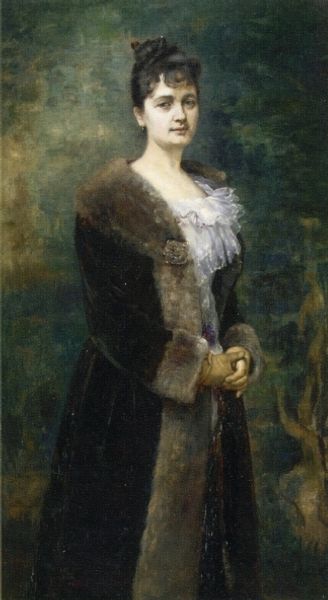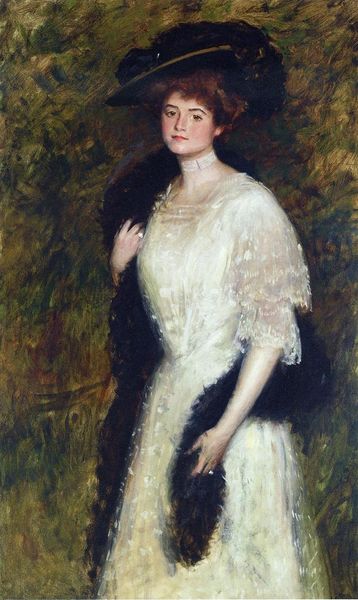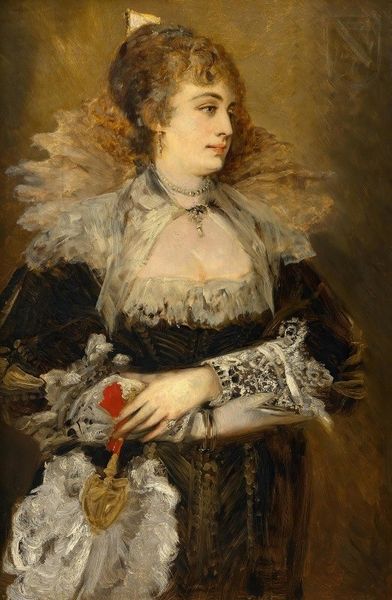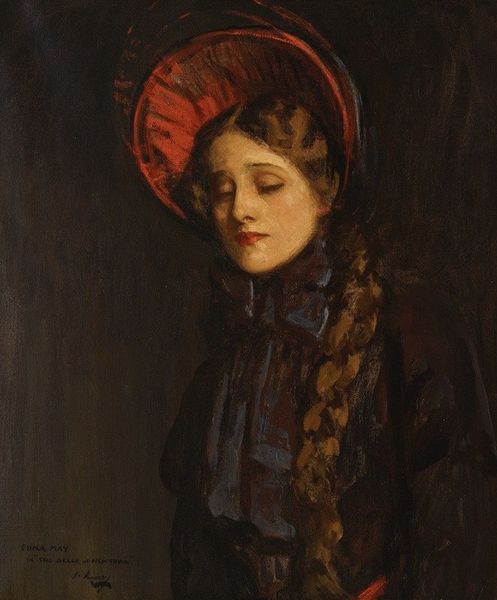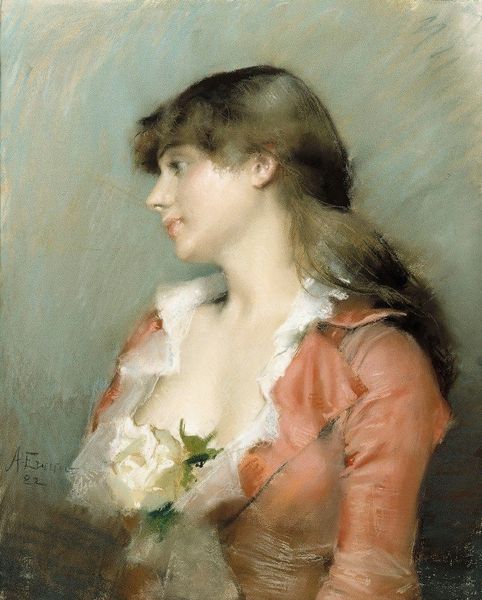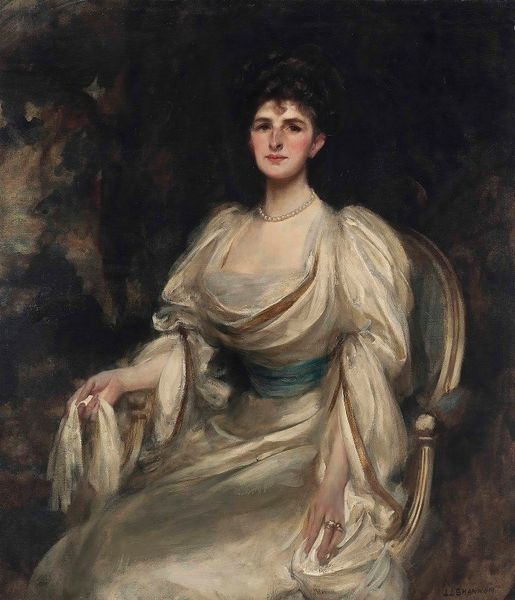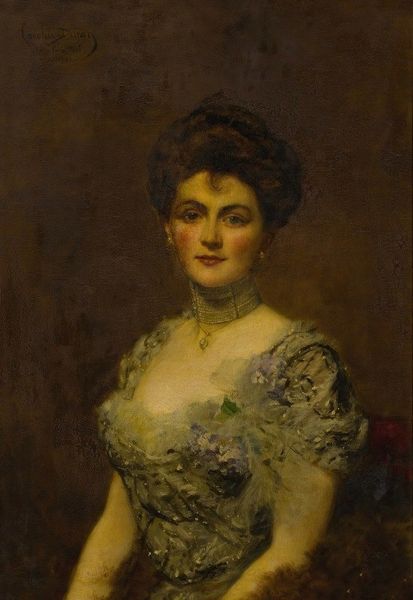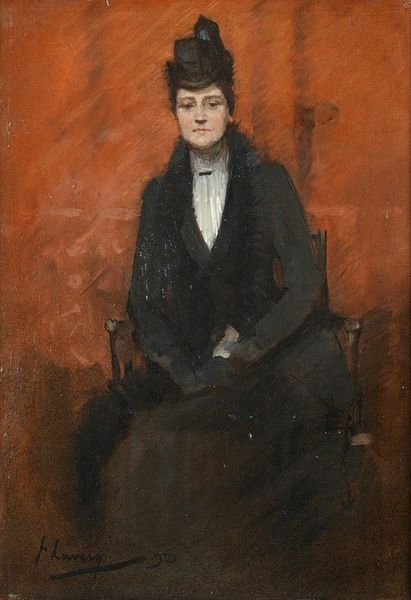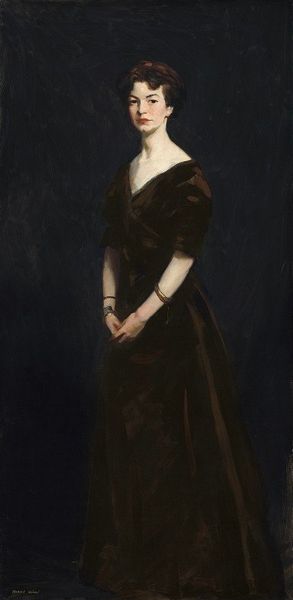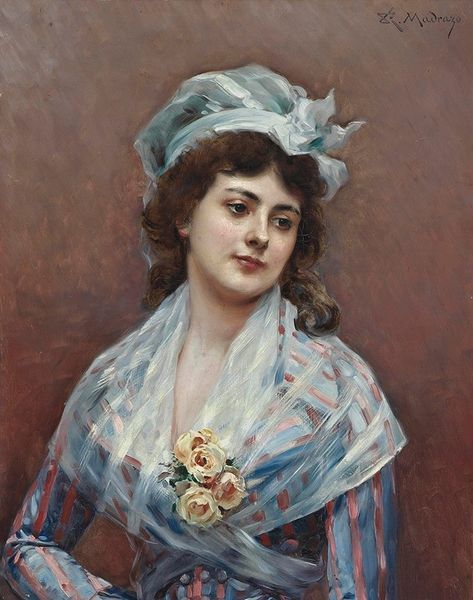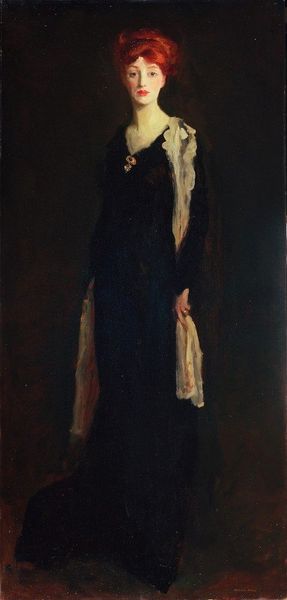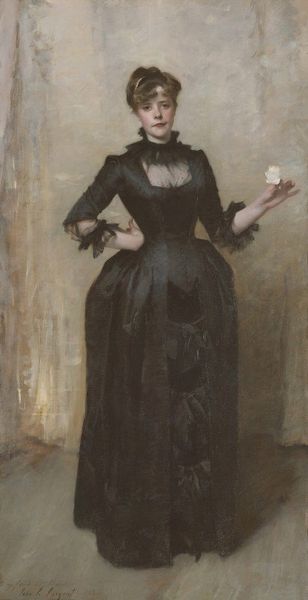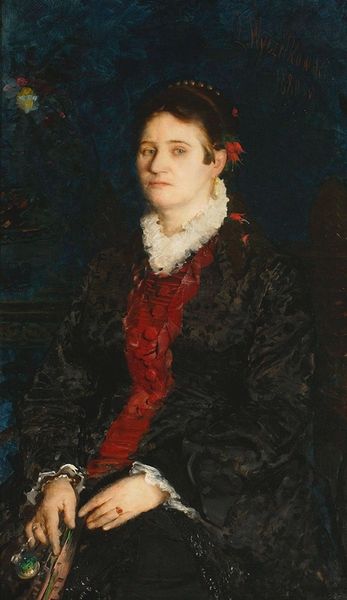
Copyright: Public Domain: Artvee
Curator: Welcome. We're looking at Hans Makart’s "Portrait of a Lady with a Fan," completed in 1885 using oil on canvas. Editor: Oh, my first impression is quite theatrical. The dark, almost brooding background emphasizes the subject’s poised and rather enigmatic expression. Curator: I agree. The composition relies heavily on tonal contrasts—note the interplay between the light reflecting off her face, the fan, and lace details, juxtaposed against the darker hues enveloping her form. Structurally, the painting is built upon a strong vertical axis. Editor: Absolutely. And it's intriguing how the fan serves as more than just a fashion accessory. Fans, historically, were imbued with layers of meaning: status, secrecy, and courtship rituals. What do you make of the colour choices? The warm reddish-brown against that oppressive dark, for example? Curator: Semiotically, it signifies a clear power dynamic. The muted palette focuses our gaze on the woman's face, but consider the confident posture. The rendering of textures is exceptional. Observe the fluidity with which Makart manipulates the oil paint to create the impression of fabric, lace, and even skin. Editor: Precisely. This assured rendering contributes to the air of elegance, maybe even arrogance? And speaking of textures, her hat! Almost masks her in a shadow that says wealth but also mystery, or even danger, suggesting complexities beyond the surface. Do you get the sense the viewer should admire or be wary? Curator: I see that, given her averted gaze, that ambiguity, intentionally disrupting any sense of idealized beauty with these deliberate aesthetic choices, and instead hinting to a more complex inner state of emotion or intention. Editor: Indeed. It reminds us how objects, seemingly passive, participate actively in the narratives we construct. This work is full of hidden communication. Curator: Well said. "Portrait of a Lady with a Fan" provides a compelling study into form and content, inviting endless analysis and consideration into portraiture in late nineteenth century European art. Editor: It leaves me thinking about the silent language of symbols and how deeply they’re embedded in the culture. I certainly walk away knowing more, now. Thank you.
Comments
No comments
Be the first to comment and join the conversation on the ultimate creative platform.
